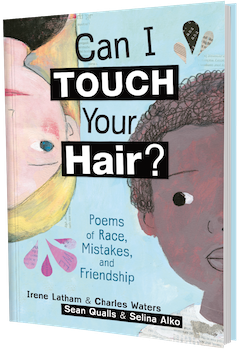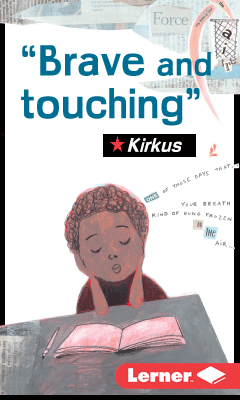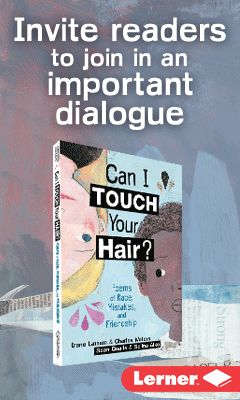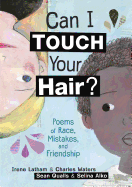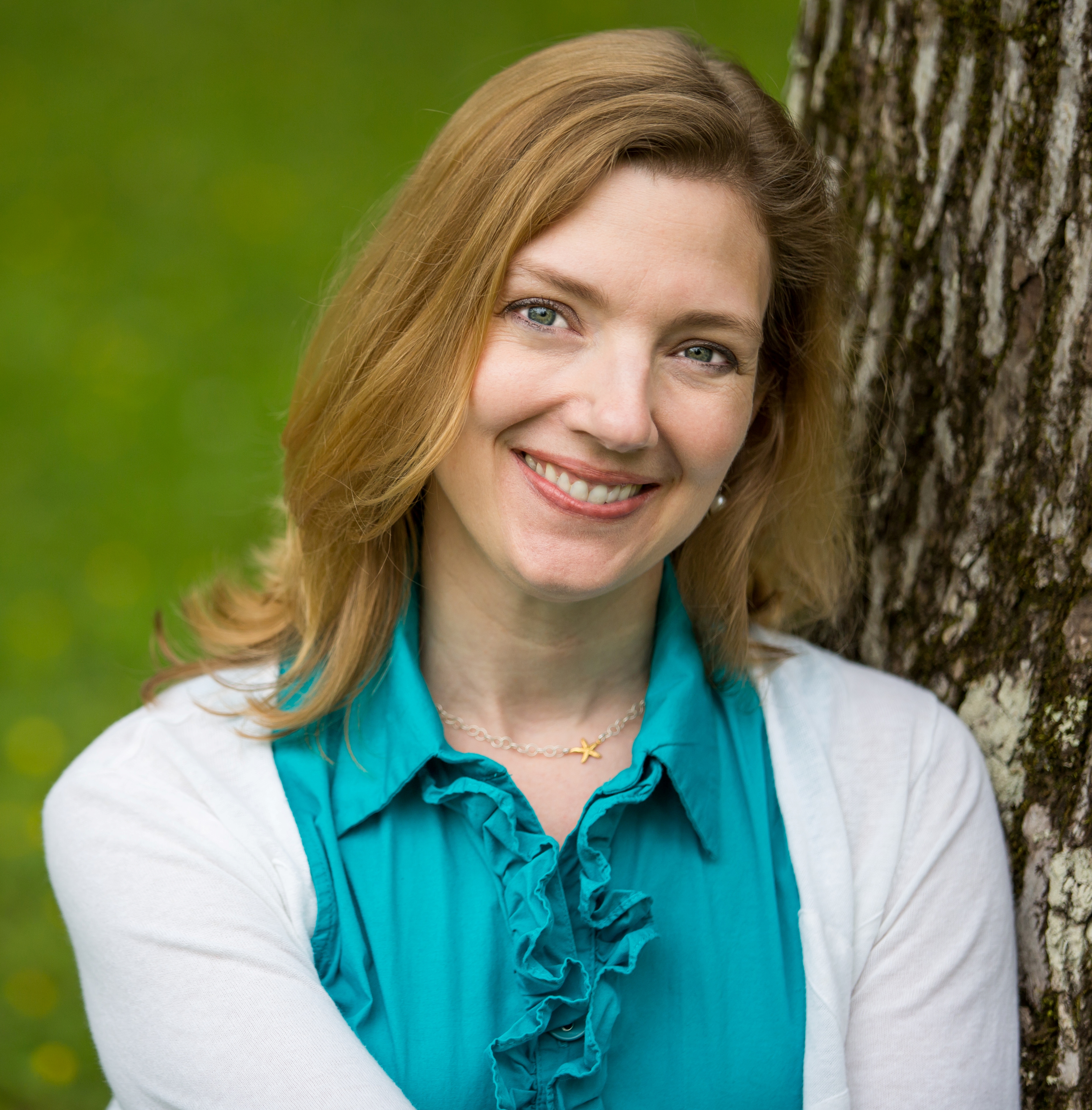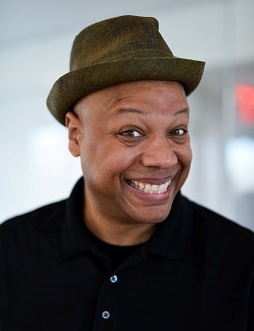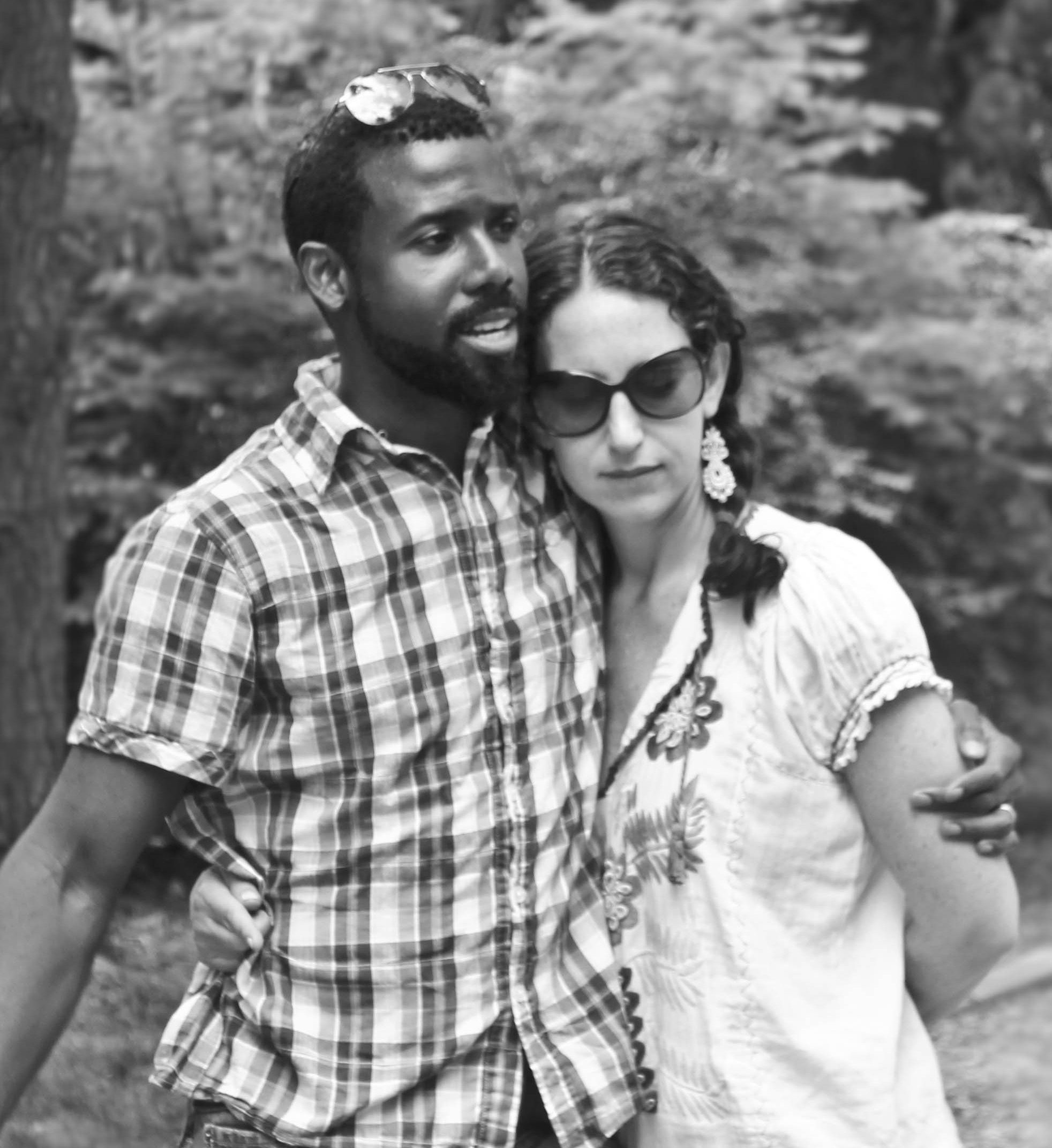Can I Touch Your Hair?: Poems of Race, Mistakes, and Friendship
by Charles Waters, Irene Latham, illus. by Sean Qualls, Selina Alko
"When our teacher says,/ Pick a partner,/ my body freezes/ like a ship in ice." Irene wants to partner with Patty Jean for Mrs. Vandenberg's poem project but Madison has already claimed her. "Within seconds,/ you-never-know-what-/ he's-going-to-say Charles/ is the only one left" and Irene is paired with him.
"Mrs. Vandenberg wants us to write poems?/ Finally, an easy project," Charles thinks, "Words fly off my pen/ onto the paper, like writing is my super power." When not writing, though, his "words are a curse": "I open my mouth,/ and people run away." Despite his excitement for the project, Charles really doesn't want to work with Irene. "Write about anything!" Mrs. Vandenberg said, "It's not black and white." But for Irene and Charles "it is./ Charles is black,/ and [Irene] is white."
The two children approach each other hesitantly. "What do you want to/ write about?" Charles asks Irene. She only shrugs. Charles continues valiantly on. "How about our shoes, hair?/ Then we can write about school and church?" Irene "takes a deep breath. 'Okay.' "
In their first collaborative efforts, the two children write about their shoes. Irene wants ruby shoes with heels to click her to "another land" or "glass slippers/ to make a dancer" out of her. Unfortunately, her mother thinks shoes should be sensible. Charles also wants exciting shoes: "neon high-tops/ with tie-dye laces," but his dad thinks shoes should be comfortable, not fashionable.
The two children continue the writing project, going back and forth covering church, the beach, horseback riding, the playground, fresh starts and more. In "Hair," Irene writes that her hair is "long and straight--/ a curtain I can hide/ behind." Charles remembers a situation in "Strands" in which a white classmate, Dennis, asked, "Can I touch your hair?" Before getting a response, Dennis patted Charles on the head: "It feels like a sponge," he said. Angry, Charles retorted, "You need to learn to wait/ for an answer after asking permission." Charles then patted Dennis's hair, "hard." "Your hair feels like a mop," Charles said, fists at the ready.
In Irene's "Church," "everyone is white"; at Charles's "Sunday Service," "everyone's brown arms are raised in devotion." Everyone's arms, that is, but Charles's.
"If it says in the Bible that Jesus
had hair like wool, eyes that were a flame of fire,
and feet like brass as if they burned in a furnace,
then why is everyone praising the straight-haired,
blue-eyed white man I see looking down over all of us?"
Each spread includes an illustration and one of the children's poems, with distinct fonts for each child, visually marking the difference between the two narrators. While the poems slowly build to depict the shared emotions of the two children and their developing friendship, some stand out as particularly heartbreaking. In "Beach Day," Charles writes,
"There's a pack of guys and girls, whose pearly skins
have been baked into a bronzed hue, strolling past me.
Each of them has hair woven into cornrows
or twisted into dreadlocks....
When I wave, they look at each other, begin snorting,
laughing at my good manners....
I'm confused: why do people who
want to look like me hate me so much?"
In "The Athlete," Charles points out the quiet racism he lives with every day: picked first for sports, even though he's not particularly athletic; chosen last to read out loud, even though he loves words. On the playground, Irene goes "to the spot by the fence/ where the black girls/ play freeze dance," hoping Shonda will ask her to play. "You've got/ the whole rest of the playground," Shonda says, "Can't we/ at least have this corner?"
The children's lives flow through their poetry, touching on big ideas that are everyday struggles. Charles finds it difficult to explain to his grandparents why he's gone vegan, why he won't eat "soul food" any longer; Irene hides "behind the door" after her "Mama pulls the paddle/ from the top of the fridge" to discipline her little brothers. Charles watches the news and sees "people who/ could pass as [his] family being choked, pummeled, shot, killed/ by police officers." Irene explains "Why Aunt Sarah Doesn't Go Downtown after Dark": "sky/ black/ streets/ black/ faces/ black/ fear/ white."
Charles and Irene's story, according to the collaborative authors' note, is that of the adult authors' if they "had met in a current-day fifth-grade classroom in a suburban school with a 60 percent white and 40 percent minority population." The "spirit" of each poem is based on their real-life experiences growing up in the 1980s, and, "whether real or imagined," the poems reflect their "truest and most honest emotions and recollections" about their own experiences related to race.
Like both the fictional and real white Irene and black Charles working together on poems, Selina Alko and Sean Qualls (a couple of almost two decades) collaborated on the illustrations in the work. Using acrylic paint, colored pencil and collage, they mixed materials together to mirror their "philosophy of mixing together [their] cultures." And as Irene's and Charles's poems speak to and with each other, building experiences and new bonds, the illustrations speak with the text, building relationships with the reader. The illustrations and text are balanced, layered and nuanced, allowing the child protagonists (and readers) the chance to sit with and make sense of race and our society's long history of inequality. Can I Touch Your Hair? is a beautifully direct yet somehow outstandingly subtle work that will allow young readers to navigate and understand their places in their communities and the greater world. --Siân Gaetano



